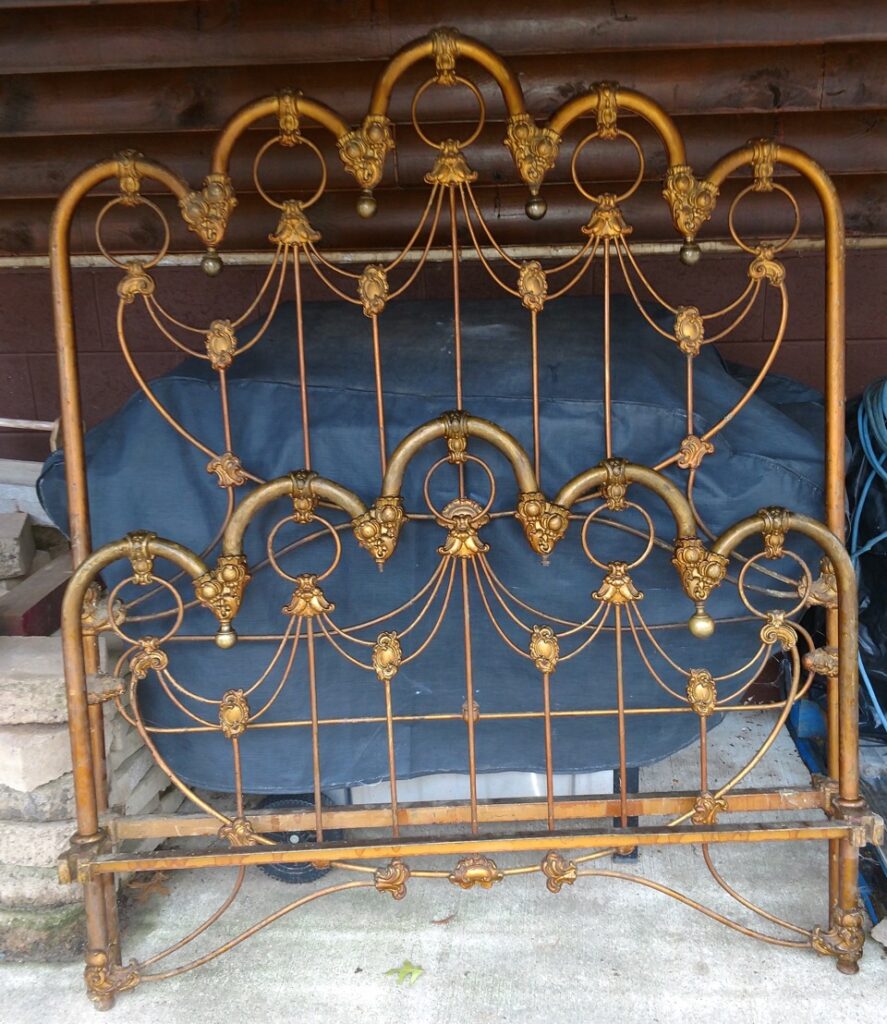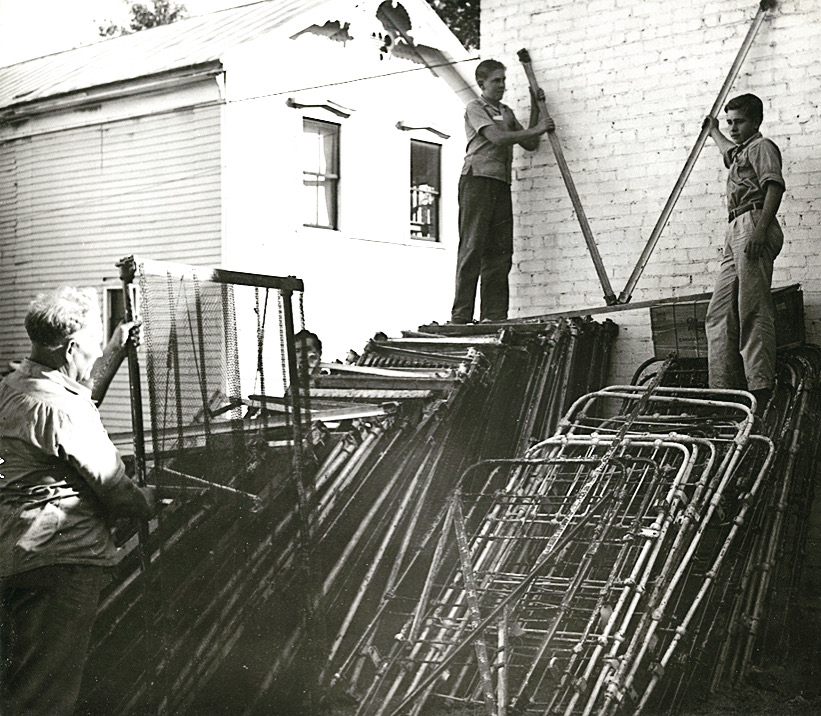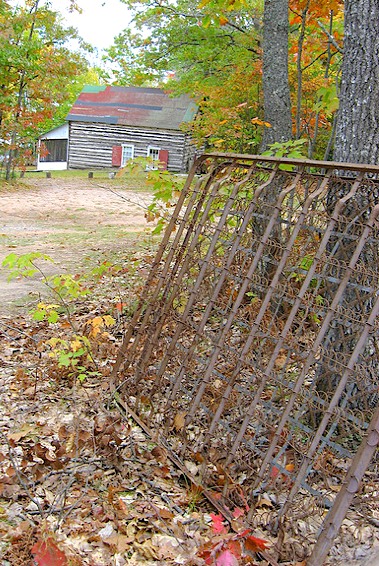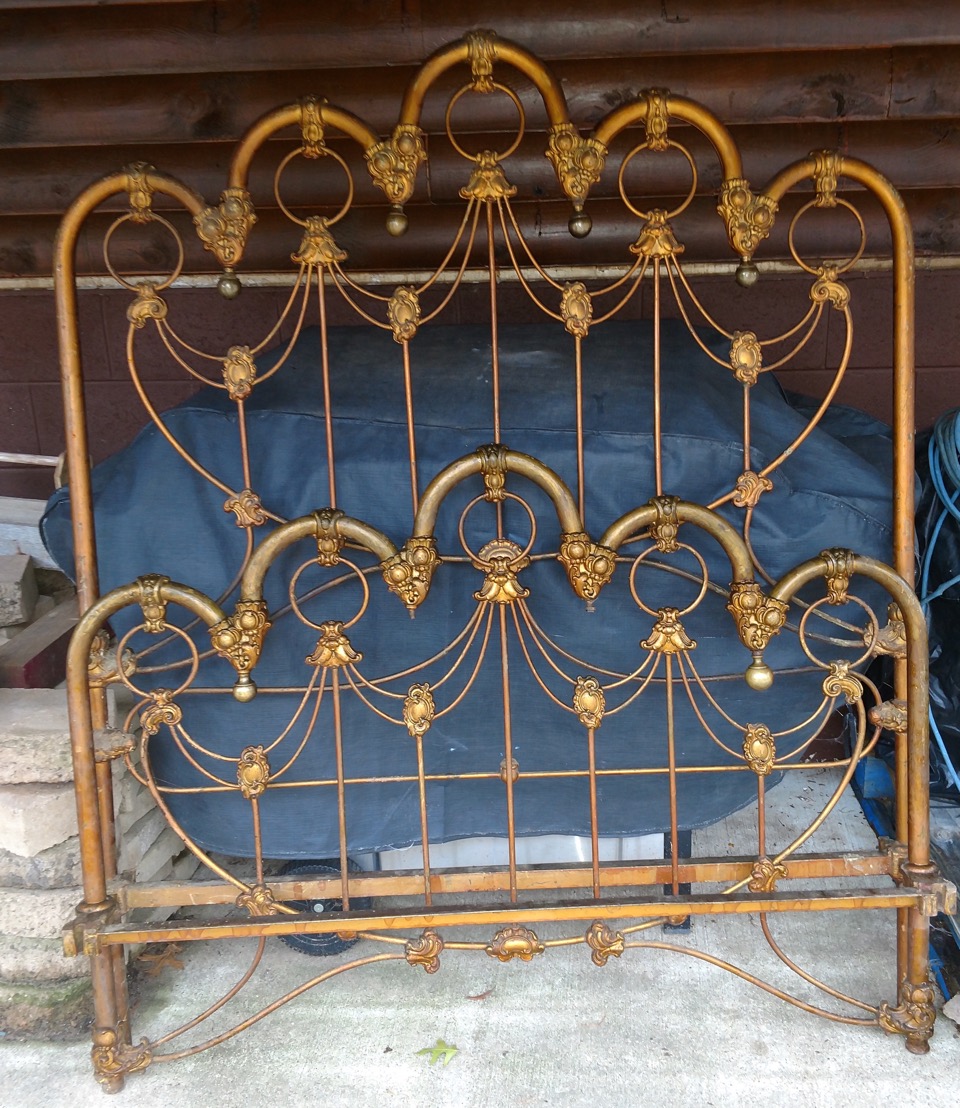In a world captivated by the sleek and modern, there exists a timeless charm in the world of antiques. Among the myriad of collectibles, antique iron beds from the 1800s stand out as not just pieces of furniture, but portals to history. This blog explores the profound appreciation for these beds, delving into their cultural significance, craftsmanship, and the escalating value they command in today’s market. Our journey begins with an extraordinary find – a bed rescued from a Wisconsin City Land Fill Dump, a testament to the enduring allure of these relics from the past.
The Unlikely Discovery:

The discovery of an antique iron bed in a landfill might seem incongruous, but it epitomizes the unpredictable nature of historical preservation. The photo posted reveals not just a discarded piece of furniture but a valuable artifact that transcends time. This find not only serves as a testament to the bed’s durability but also highlights the untapped potential in unassuming places, underscoring the need for a renewed appreciation for antiques.
Cultural Significance:
Antique iron beds from the 1800s encapsulate a bygone era’s craftsmanship and design sensibilities. During the 19th century, these beds were more than just functional pieces of furniture; they were a reflection of societal values, craftsmanship, and artistry. The intricate scrollwork, ornate details, and solid iron construction tell a story of a time when craftsmanship was an art form, and each piece was a unique expression of its creator.
The enduring appeal of these beds lies in their ability to evoke a sense of nostalgia, transporting us to a time when attention to detail and quality were paramount. Owning such a piece is not merely acquiring furniture; it’s a connection to the past, a tangible link to the history and culture that shaped it.

The Escalating Value:
The rarity of antique iron beds from the 1800s has fueled their increasing value in today’s market. As these beds become scarcer due to age and the depletion of the original supply, their worth continues to rise. Collectors and enthusiasts alike recognize the investment potential, viewing these beds as not just functional items but as tangible assets with historical significance.
The search terms used by those looking to buy antique iron beds reflect the growing interest in these timeless pieces. Phrases like “antique iron beds,” “iron beds,” “vintage iron beds,” and “vintage wrought iron beds” dominate online searches. This surge in online interest has created a thriving market for sellers and buyers, connecting passionate collectors with the objects of their desire.
Craftsmanship and Durability:
One of the defining features of antique iron beds is the unmatched craftsmanship and durability that went into their creation. Craftsmen from the 1800s employed techniques that have become rare in the mass-produced furniture of today. The robust iron construction ensures that these beds withstand the test of time, contributing to their longevity and desirability.
The meticulous craftsmanship involved in creating these beds extends beyond their aesthetic appeal. Each curve, twist, and detail reflects the skill and dedication of the artisans who labored over them. This level of craftsmanship is a stark contrast to the disposable nature of much of today’s furniture, adding to the allure of antique iron beds as enduring and meaningful investments.
Preserving History:
The appreciation for antique iron beds goes beyond their monetary value. Owning one is a commitment to preserving history and cultural heritage. Each bed is a tangible link to a particular era, offering a glimpse into the lives of those who came before us. The act of rescuing an antique iron bed from a landfill, as in the Wisconsin City case, exemplifies the importance of recognizing and safeguarding our shared past.

The Environmental Impact:
In a world increasingly concerned with sustainability, the trend of repurposing and appreciating antique furniture aligns with eco-friendly practices. Recycling and reusing antique iron beds contribute to reducing the environmental impact associated with modern manufacturing and disposal. As more people recognize the value in preserving and cherishing these pieces, the demand for antiques as sustainable alternatives continues to grow.
Conclusion:
The journey from a Wisconsin City Land Fill Dump to a sought-after collector’s item exemplifies the enduring appreciation for antique iron beds from the 1800s. Their cultural significance, craftsmanship, and escalating value in today’s market highlight their timeless allure. As online searches for phrases like “antique iron beds,” “iron beds,” “vintage iron beds,” and “vintage wrought iron beds” continue to surge, the demand for these historical treasures remains robust. In a world that often prioritizes the new and trendy, the enduring appeal of antique iron beds stands as a testament to the timeless beauty and value embedded in the relics of our past.







